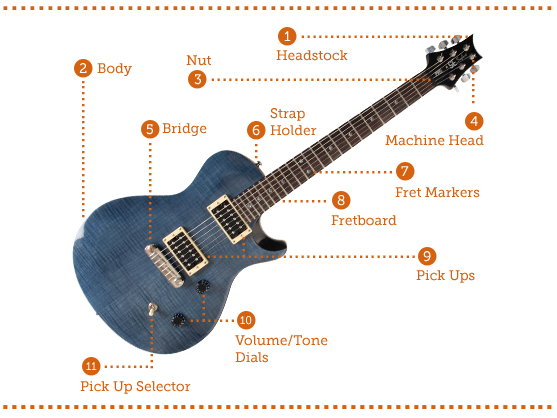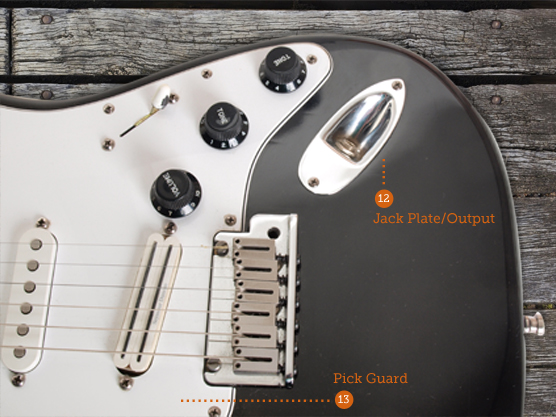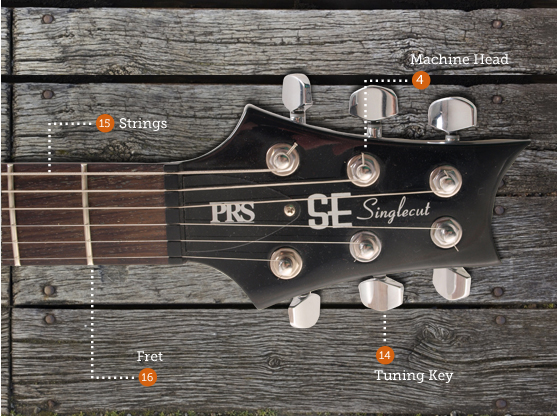Buying your first electric guitar is simple enough, you like the look, you like the sound and price is good. You get it home ready to have a play and you realise there are so many elements you may not have even considered like what do those dials do, why can I turn this etc.
So to make it easier for all you budding musicians I have created a simple guide to the electric guitar, your welcome!

- Headstock • Found on most string instruments the headstock holds the strings along the guitar using the machine heads located on it (see below for description). They come in all shapes and sizes depending on the make of guitar.
- Body • Unlike an acoustic guitar the electric has a solid body. It uses it’s pickups, and usually an external amplifier and speaker to create its sound. These also come in a variety of shapes depending on design.
- Nut • This is a small strip of hard material at the top of the fretboard that holds the strings in place to ensure an even distance from the board. This is the end point of the strings vibration when playing
- Machine Head • Used to tune the guitar and is the end point of the strings which are wound around and tightened to create the note you desire.
- Bridge • This section holds the strings in place at the other end. The bridge can also be ‘floating’, this means it is part of a tremelo system which allows the player to alter the pitch of the string through the manipulation of the bridge.
- Strap Holder • Pretty much self explanatory here, this is where straps are attached to the body of the guitar.
- Fret Marker • These are there simply to help players navigate the fretboard and provide a quick reference point when moving fluidly up and down the fretboard. They mark the 3rd, 5th, 7th, 9th, 12th, 15th, 17th, 19th and 21st fret.
- Fretboard • Also known as fingerboards, come in various woods such as rosewood or maple offering tonal variations. Inside this you will find the truss rod, we’ll get into that another time : )
- Pick Ups • Pickups are the things which translate the vibration of a guitars strings into the signal sent to the amplifier. Pickups vary considerably and are responsible for the the majority of your guitars tone.
- Volume/Tone Dials • Ok so the volume dial speaks for itself. The tone dial allows you to effect the amount of mids and highs in you sound.
- Pick Up Selector • This is a switch that allows to pick specific pickups or combinations of pickups on your guitar.
- Jack Plate/Output • Where you plug in your guitar to your amplifier using a cable
- Pick Guard • Simply a, usually plastic, covering around the area you will mostly be picking, strumming etc to protect the body from any damage that could be caused. A lot cheaper to replace than the body!!!
- Tuning Key • These connect to the machine head allowing you to alter the tension of your strings, thus affecting the pitch. These are used to tune your guitar correctly
- Strings • When picked, string vibrate at a specific frequency which can be audibly heard and picked up by your ‘pickups’.

